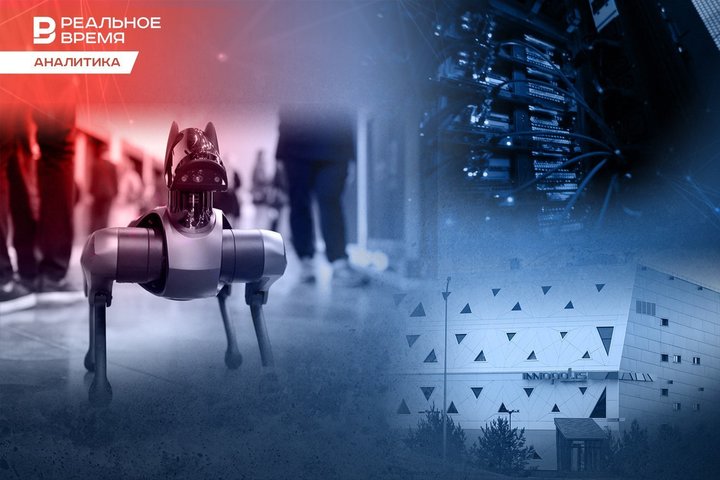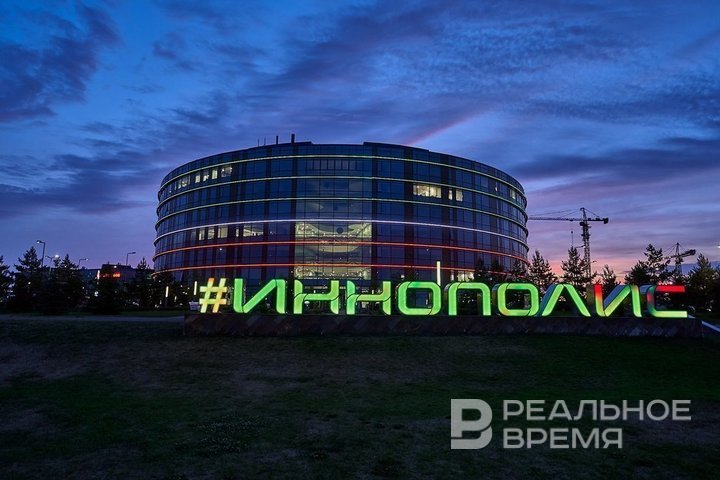Data market: how digitalisation trend and sanctions are changing commercial data processing centres

The data processing centre market in Russia is growing rapidly. According to iKS-Consulting consulting agency, by the end of 2024, the Russian commercial data processing centre market will exceed 82,000 server rack spaces, and by 2028 it will almost double. This will be facilitated by the digitalisation of the economy and the growing demand for data centre services in the regions. Tatarstan, as one of the leading IT regions, is also interested in expanding computing capacity and investing in data centres. However, there is a fly in the ointment. The high key rate has a negative impact on the payback of such projects, and in the long term may slow down this dynamically growing market.
The economy requires more and more data centres
According to iKS-Consulting forecasts, by 2028, the Russian market of commercial data processing centres (DPCs) may grow by 2.1 times compared to 2023, according to the most optimistic forecasts, reaching 148,000 server rack spaces. According to the baseline scenario, an increase of 1.92 times is predicted — up to 135,000 rack spaces.
In monetary terms, the market volume may grow by 2.8 times — up to 121 billion rubles. According to the baseline scenario, the revenue of DPCs in 2028 is expected to be at the level of 104 billion rubles.
Since 2020, the volume of the commercial DPC market in Russia has grown by 80% and by the end of this year will exceed 82,000 server rack spaces. RTK-TsOD, a subsidiary of Rostelecom, leader of this market. After acquiring a large data processing centre in the north of Moscow this summer, its capacity increased to 27,000 server racks. This is three times more than each of its closest competitors — IXcellerate, Rosatom and DataPro.
The Russian data centre market is growing despite the sanctions. The departure of Western vendors in 2022 affected the implementation dates and cost of a number of DPCs and forced builders to change projects and slow down the delivery of some of them. In addition, the search for new solutions has also influenced the rise in construction costs.
However, the growth of this market is part of a global trend. The penetration of digital technologies — artificial intelligence, digital twins, virtual reality and blockchain — requires more and more computing power.
In addition, the level of digitalisation of all business processes and the penetration of digital technologies into people's everyday lives are increasing. The development of cloud services whose share is constantly increasing, also contributes to the growing demand for commercial data centre services. Thus, according to iKS-Consulting estimates, the share of cloud services has grown from 43.3 to 58.2% since 2020.
Moscow is the leader in the data centre market in terms of rack space and revenue. In 2023, 79.5% of the introduced rack space was in the capital, another 10.5% in Saint Petersburg and 13.7% in all other regions of Russia, clarified leading consultant of iKS-Consulting Stanislav Mirin.
“At regional level, I would note the Volga Federal District, Siberian Federal District and Ural Federal District, respectively, Kazan, Nizhny Novgorod and Samara, Novosibirsk and Yekaterinburg,” Mirin commented to Realnoe Vremya. “Thanks to the large new Rosatom DPC in Innopolis with 1,000 racks, Kazan is moving into second place in terms of the number of rack spaces introduced. We expect that by the end of 2024, Novosibirsk will have 1,600 racks, Kazan — 1,400 and Yekaterinburg — more than 1,000 racks.”

The expert expects above-average growth rates in the regions — today, RTK-DC, Rosatom, and KeyPoint Group are actively building in the regions. There are also local players in the regions, he notes, but they usually talk about DPCs with a capacity of up to 200-300 racks.
Tatarstan needs more DPCs
Since 2009, one of the first DPCs in the Volga region has been operating at the Kazan IT Park; today, it houses 266 racks. Also, in the capital of Tatarstan, the commercial data centre of Stek Kazan with 376 racks has been operating for more than 10 years, the press service of the Ministry of Digital Development of the Republic of Tatarstan told Realnoe Vremya. In June, Rosatom commissioned the first stage of its data centre in Innopolis with a thousand racks, the project is being implemented by a subsidiary of Rosatom, a resident of Innopolis SEZ, Atomdata-Innopolis. The second stage will increase the capacity of Rosatom's data center by another thousand racks. The local operator Tattelecom is also building a data centre, including for commercial services.


At the same time, the “infrastructure inequality” is still here, the infrastructure is mainly located in Moscow and Saint Petersburg, he noted. Rosatom is developing its geo-distributed network of data centres. “By opening data centres outside of Moscow and Saint Petersburg, firstly, we eliminate the “digital inequality” and increase the share of regions in the data centre infrastructure. Secondly, in the current geopolitical situation, customers are very interested in the geo-distribution of digital infrastructure — now they are interested not only in volumes and capacities, but also in data security, which is ensured by geo-redundancy,” Nemchenkov explained.

Tatarstan does not have many domestic customers, but large data centres can become a sought-after product for federal companies that are looking for regions with ready-made infrastructure, the entrepreneur notes. The republic already has experience in building large-scale development projects and has the necessary competencies to develop this market.
“Construction and maintenance of such centres is a profitable and understandable business, because a data centre is essentially specialised commercial real estate, a stable asset for the future,” Vasil Zakiyev is sure.
“Construction of large-scale data centres for projects in Tatarstan requires significant energy resources, which are becoming scarce in the republic. Large global corporations are also faced with a shortage of electricity and are forced to order the construction of generating capacities, including nuclear ones. More electricity is needed. The construction of a nuclear power plant could be one of the possible solutions, especially since this was already planned for Kamskiye Polyany at the end of the USSR,” the entrepreneur reflects.
The example of Innopolis, where Rosatom built a data center and plans to expand it, inspires hope that such complex projects are possible where nuclear generation will be combined with data centres. “If such facilities are located in the republic, then we will all only benefit from this,” Zakiyev summarised.

High key rate may slow down the market
At the same time, most data centres today are built with borrowed funds, and the current monetary policy of the Central Bank may slow down the development of the market.
The growth of the key rate may lead to a decrease in the pace of construction of data processing centres in the country, Kommersant predicts citing market participants. On 25 October, the Central Bank of the Russian Federation raised it to 21% — this is an absolute record over the past 10 years. The newspaper cites the opinion of Commercial Director of ART Engineering Artyom Stenyushkin, who believes that the growth of the key rate will force companies to increase their spending on borrowed funds not only for the construction of new data centres, but also for updating equipment in data centres that were commissioned more than five years ago.
According to partner at iKS-Consulting Tatyana Tolmachyova, the ratio of companies' own investments to borrowed ones in the DPC market is within 20-30% to 70-80%. “The average capital expenditure on a data centre per 1 MW of IT capacity is 1.2 billion rubles, which means that the debt burden on the project may increase due to an increase in the rate by 12-15%,” Tolmachyova said.
Under such conditions, the attractiveness of investments in the construction of new data centres will significantly worsen, Tolmachyova is sure. She also believes that the current situation on the market may result in an “acute capacity shortage.” Russia has already faced something similar in 2022.

“In general, any business today lives on borrowed money, and the cost of this money has increased, so rapid market growth is impossible. The profitability of data centres remains high, but another problem arises — the payback period will change,” the analyst comments. “The cost of commercial data centres will grow, there are all the prerequisites for this — the cost of business and the payback period of investments are growing.”
Data centre services will also grow. “We will feel this in full measure across the entire market. In 2025-2026, the minimum cost of data centre services will grow by 20-25%. This cannot be avoided in any way,” Murtazin is sure.